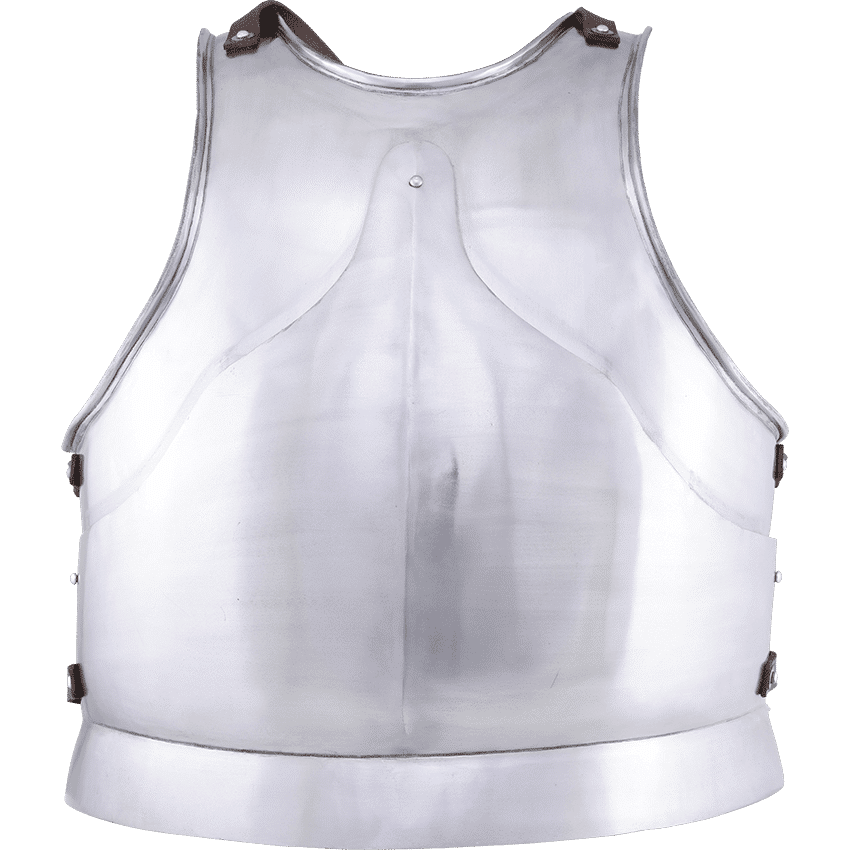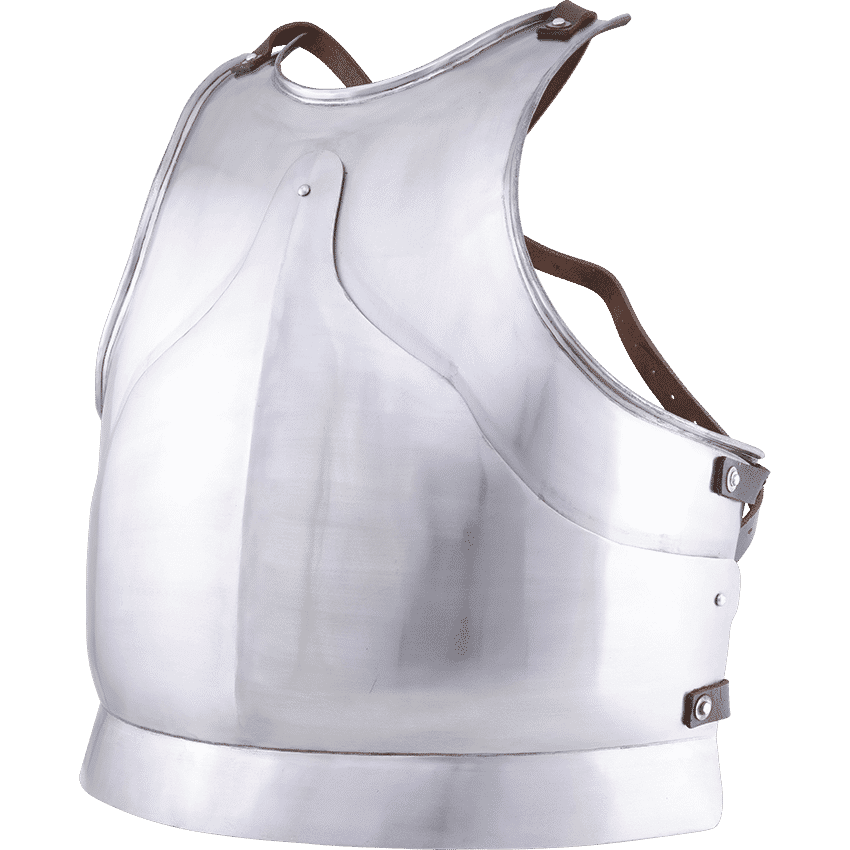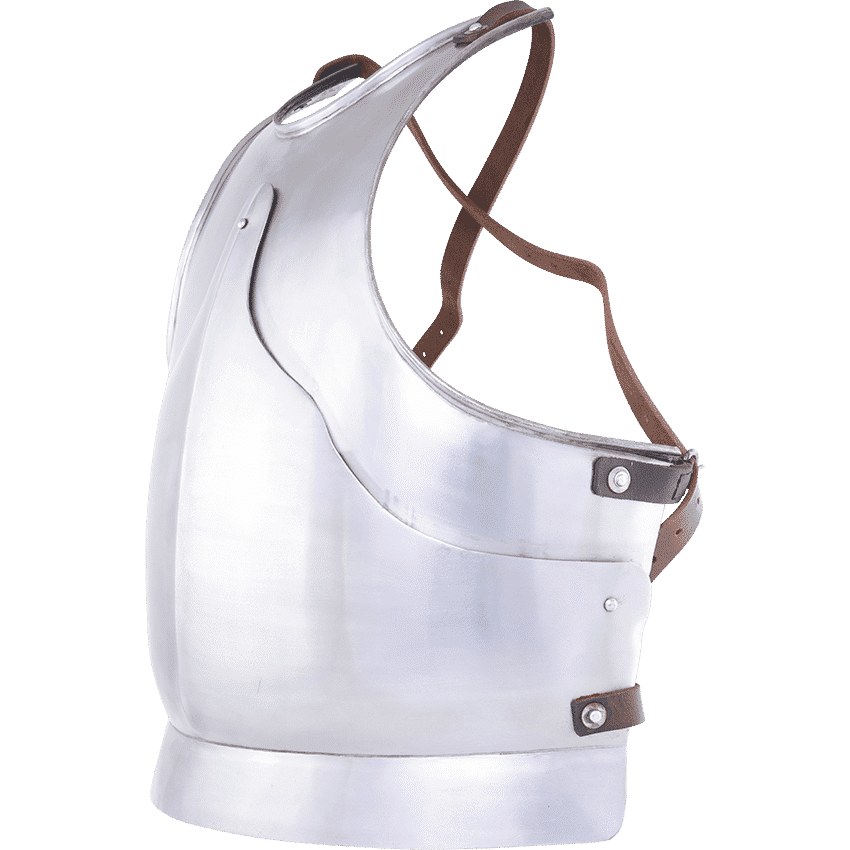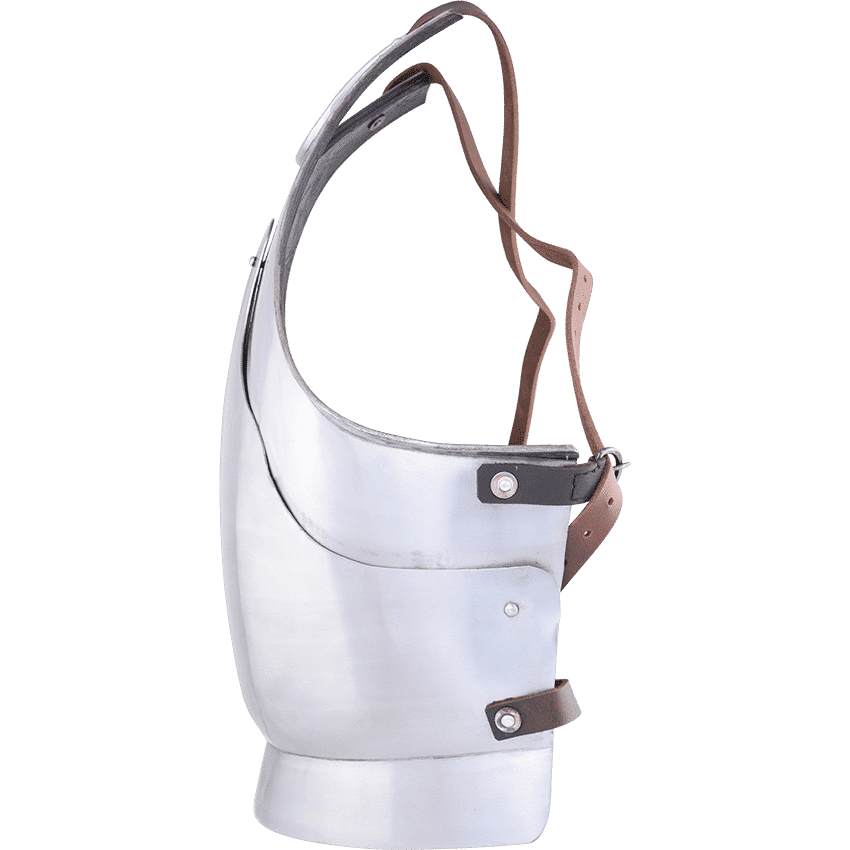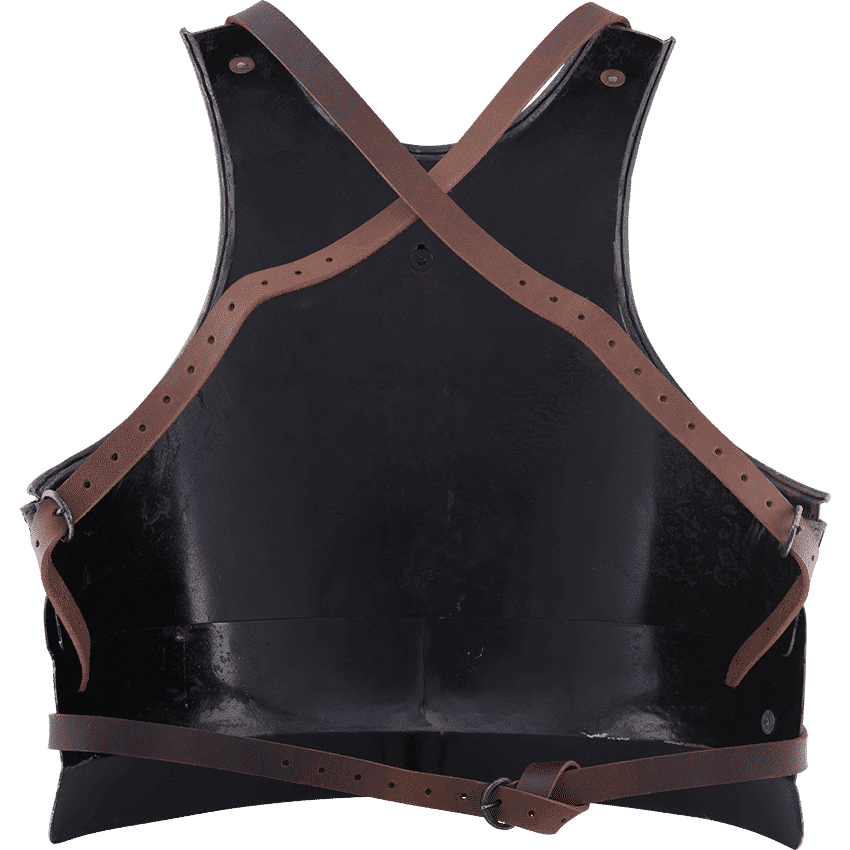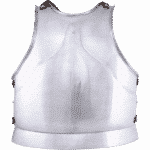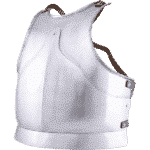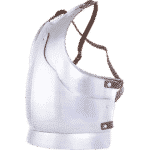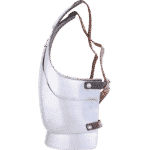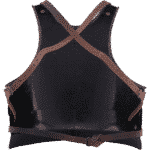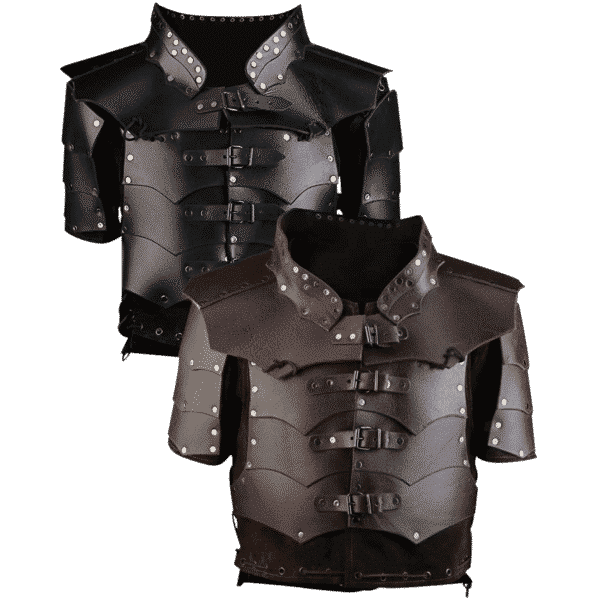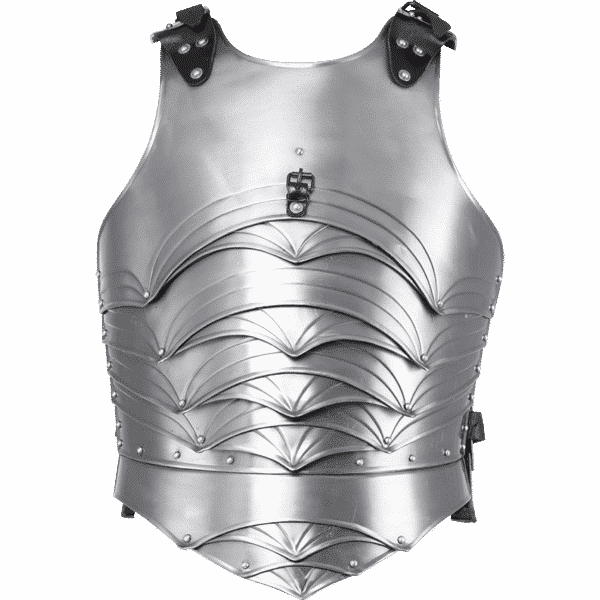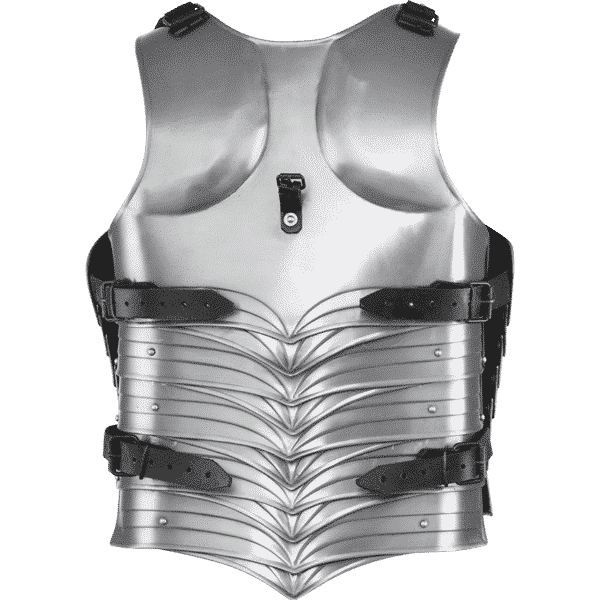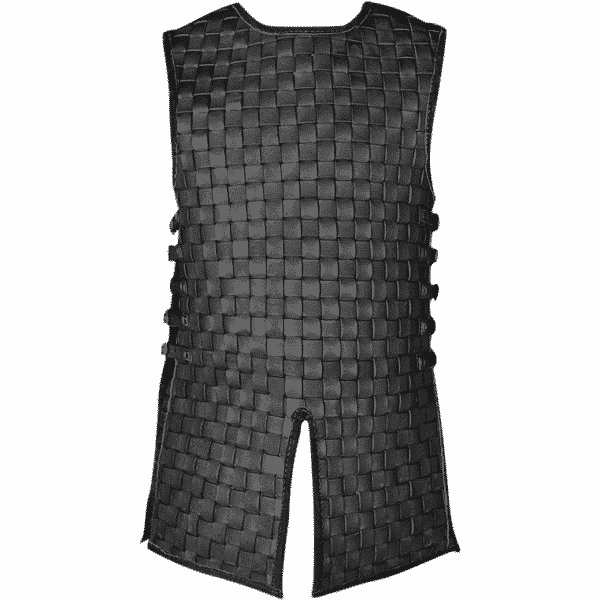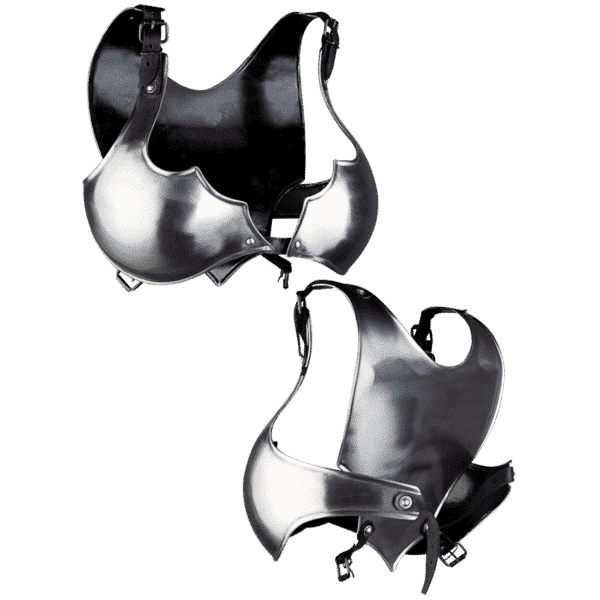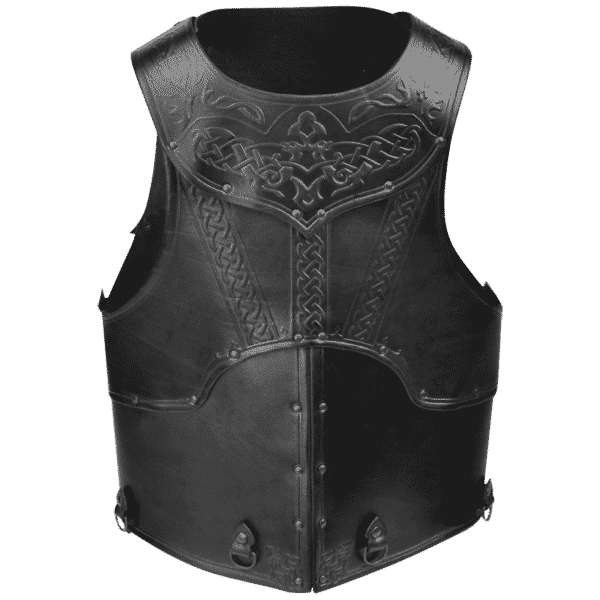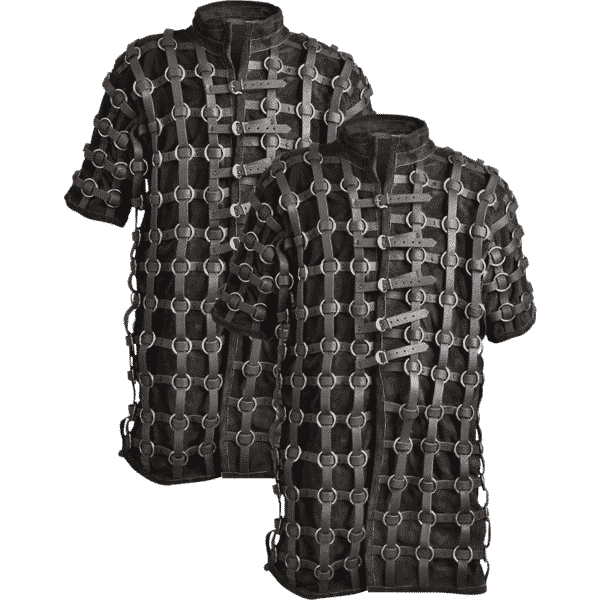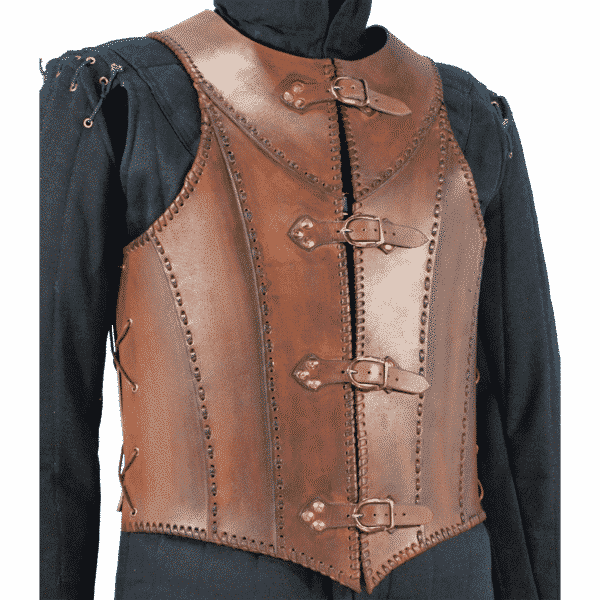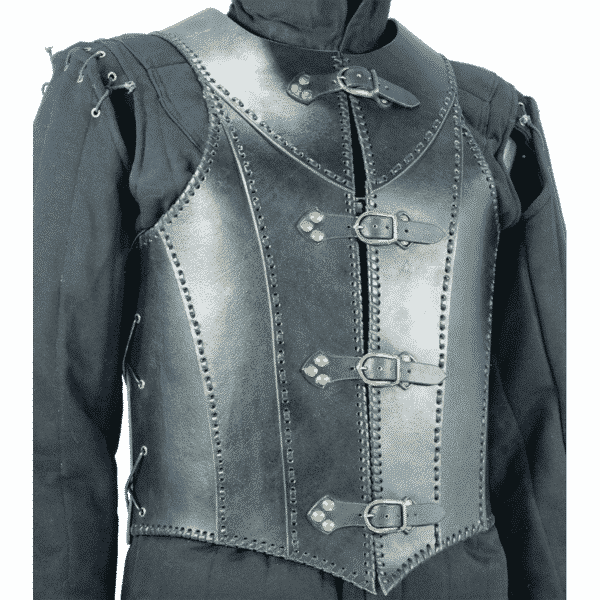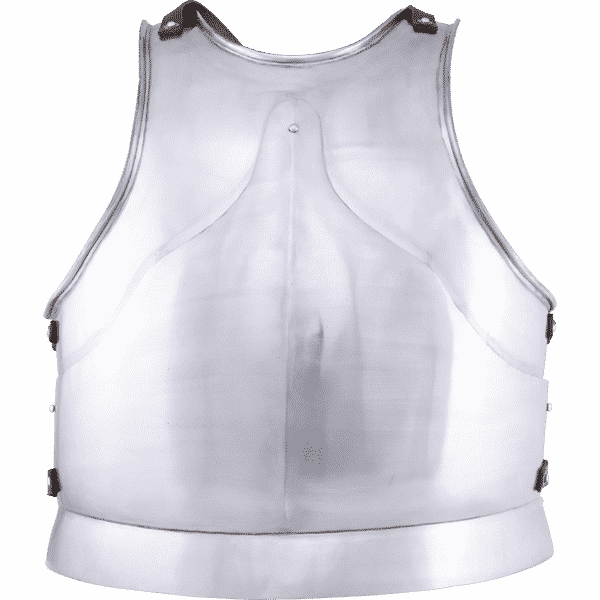(About) From House of Warfare’s Master Craftsmen to your Collection
It’s rare to find a piece of armor which ticks all the boxes: hand-made attention to detail, top-drawer materials, and at a reasonable price. Our Polished Steel Cuirass is that rare treat. The armorers at House of Warfare have designed a fantastic reproduction steel breastplate that can bring the added depth your LARP outfit or re-enactment needs – without breaking the bank.
House of Warfare hand-forge every piece they produce: this means that a master craftsman has poured their artistic soul in making the very breastplate you’ll wear. With their exacting tolerances and high standards, each piece nevertheless is a unique hand-crafted work. Their armorers have selected 16-gauge steel to create our Polished Steel Cuirass: this means the steel is around 1.5mm thick. An historical military steel cuirass made in an armorer’s workshop in an Italian or German city in the 1400s CE would be hammered out a little thinner, to around 20- to 18-gauge in thickness; ours in closer in thickness to the extra-resilient tournament armor of the period. Our Polished Steel Cuirass features rolled edges, originally designed to strengthen the edges against sword blows, they have the handy quality of being safe to handle and snag-free without sharp edges. Its face is subtly rounded so as to spread the impact of heavy crushing blows– you’ll see this effect if you try to squash an egg from opposite ends. It also features a shallow tapul to turn slashing weaponry safely aside.
The materials used by House of Warfare in our Polished Steel Cuirass are second-to-none. They use high-grade untempered mild steel – again, exactly the material used by late-medieval smiths in historical plate armor. In order to keep historical accuracy as close as possible, this steel is not alloyed to make it stainless, and should be kept properly oiled and dry when not in use. Whilst it is not tempered and is therefore not able to withstand full-contact heavy combat without dents and damage, it is resilient and tough, and can easily withstand LARP and re-enactment use. It has three rugged leather securing straps, which are all buckled and holed to allow the perfect fit.
In all, this breastplate is an unmatched piece of historical reproduction. Its high-polish shines out like a beacon on the battlefield or at court, and it is a fully modular piece which is wearable on its own as well as being fully compatible with all of our other armor available separately.
Curiosity The Amoursmiths Quandary: The Challenges of Making Medieval Plate armor
In the medieval period, plate armor had to strike a balance: it couldn’t be too light, or it would be easily buckled or punctured by the powerful weapons of late-medieval armies like crow’s beaks or crossbow bolts, and it couldn’t be too heavy as to exhaust its wearer after only a short duration of combat. Tournament armor tended to be a little thicker, but it was not intended for prolongued periods of intense combat – it was more like medieval safety wear.
Metalworkers in the medieval period were generally very good at producing fairly pure iron in a bloomery (a simple clay smelting oven), but turning it into steel was a labour intensive process, ‘carburising’ the iron by either baking it in a case with charcoal, or by labouriously working it in a charcoal-fired hearth. This meant that pure-ish iron was commonly used for armor, which was fairly soft and bendy. By the 15th-century CE, metalworking techniques had become much advanced, and high-quality steel was beginning to be produced in Europe on a greater scale with the use of blast furnaces and finery hearths. The only difference between medieval steel and the steel in our Polished Steel Cuirass is the scale of production and automation.
In the medieval period, leather points and straps would have been made by boiling tanned hide in oil or wax, making cuir bouilli, a fairly resilient boiled leather – frustratingly, cuir bouilli is a fragile material, being prone to drying out if not carefully maintained or rotting if not kept dry. We have very few surviving examples of it, but armor-makers have been able to faithfully reproduce the pointing and strapping of medieval armor from surviving pictorial sources.
Technical Specifications:
- Material: 16-Gauge mild steel
- Weight: 38 lbs
- Size Guide
Medium: Chest – 37-40 Inches, Waist – 35-40.5 Inches, Chest Front – 20.5 Inches, Height- 20.5 Inches, Neck Width – 7 Inches
Large: Chest – 39-43.25 Inches, Waist – 38.5-42.5 Inches, Chest Front – 22.5 Inches, Height – 20.5 Inches, Neck Width – 7 Inches
X-Large: Chest – 38.5-43 Inches, Waist – 41.5-45 Inches, Chest Front – 25.25 Inches, Height – 19 Inches, Neck Width – 7 Inches

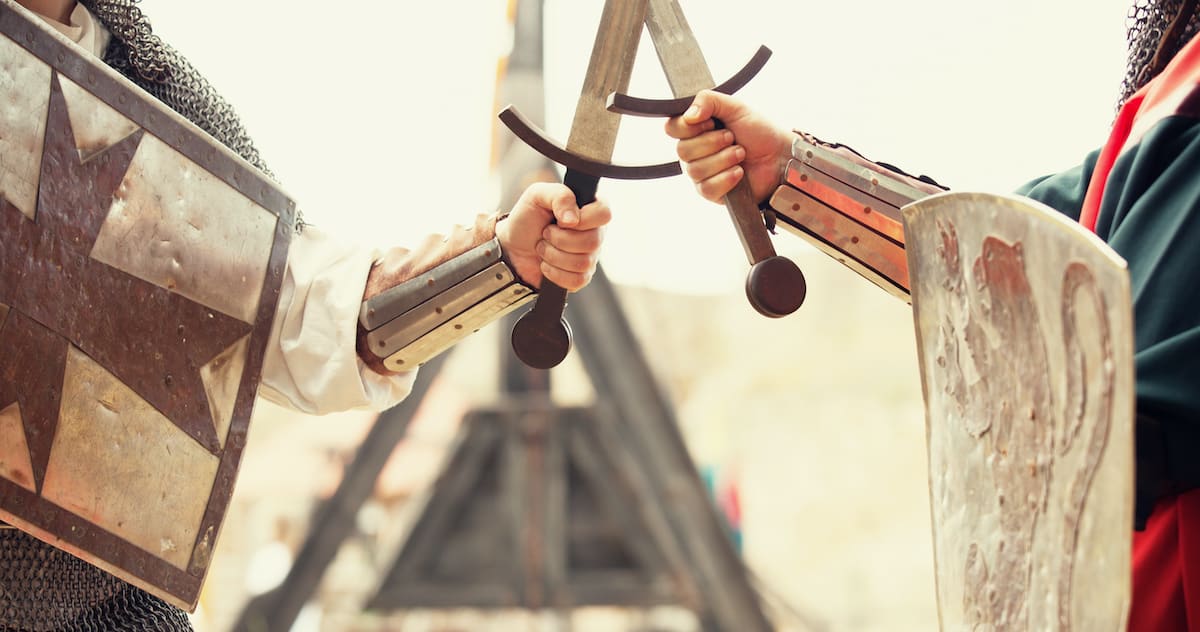 Historical Swords
Historical Swords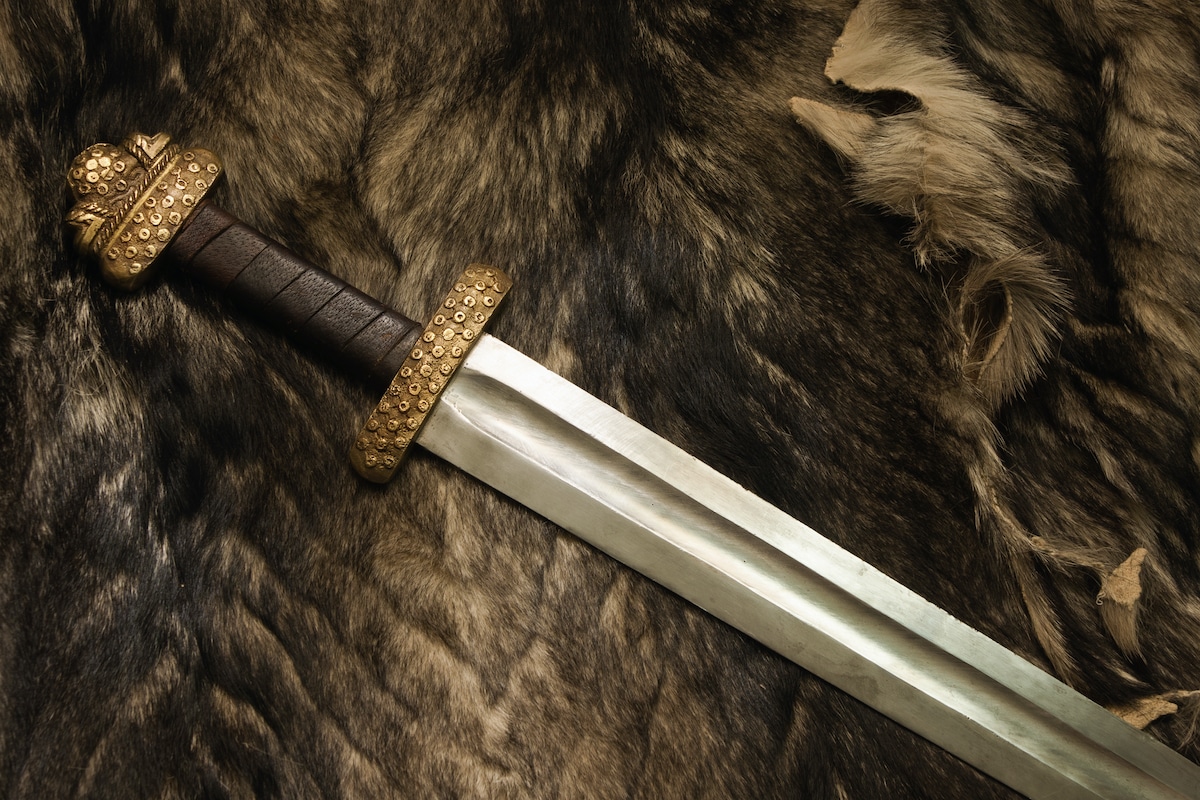 Norse & Viking Swords
Norse & Viking Swords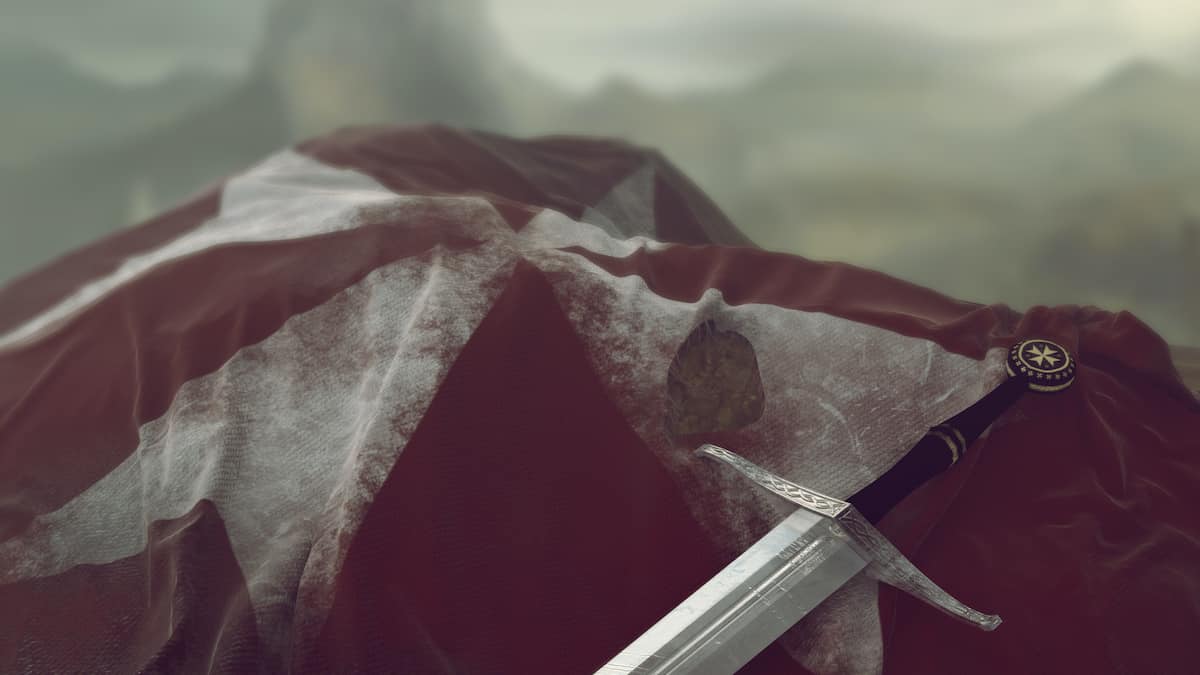 Templar Swords
Templar Swords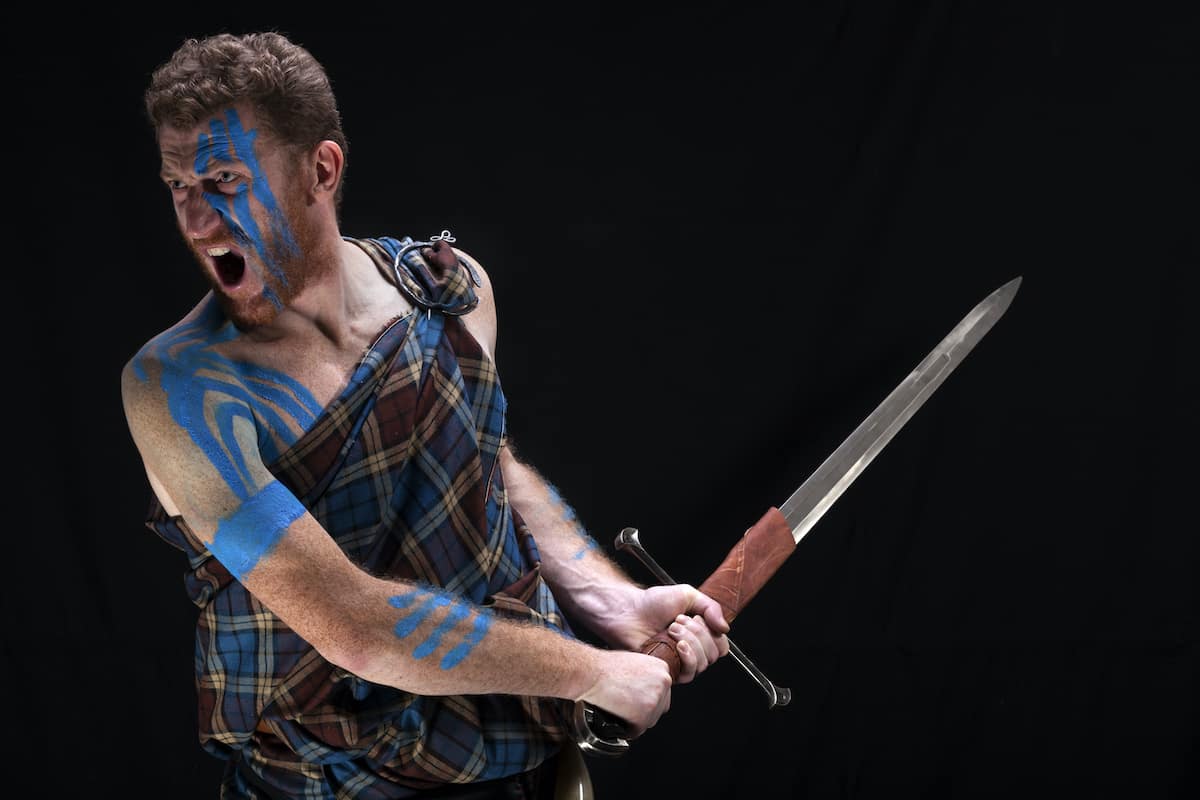 Claymore Swords
Claymore Swords Fantasy Swords
Fantasy Swords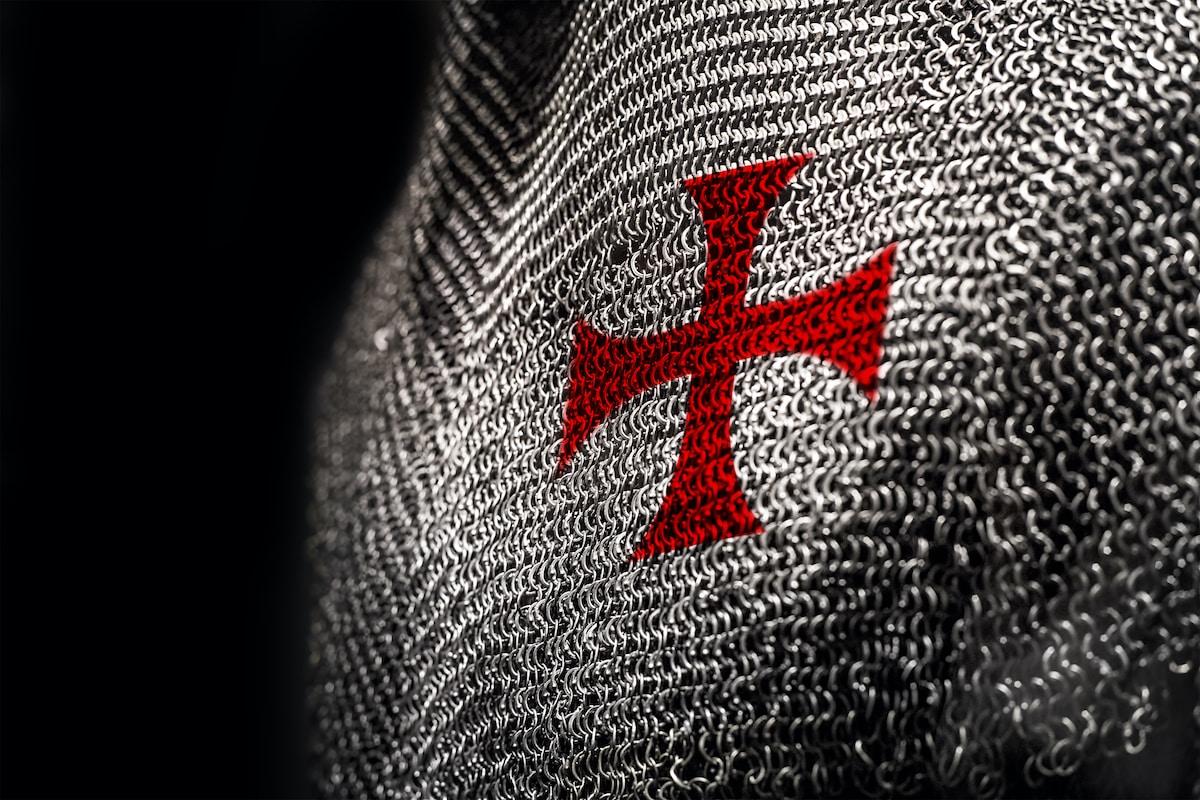 Chainmail
Chainmail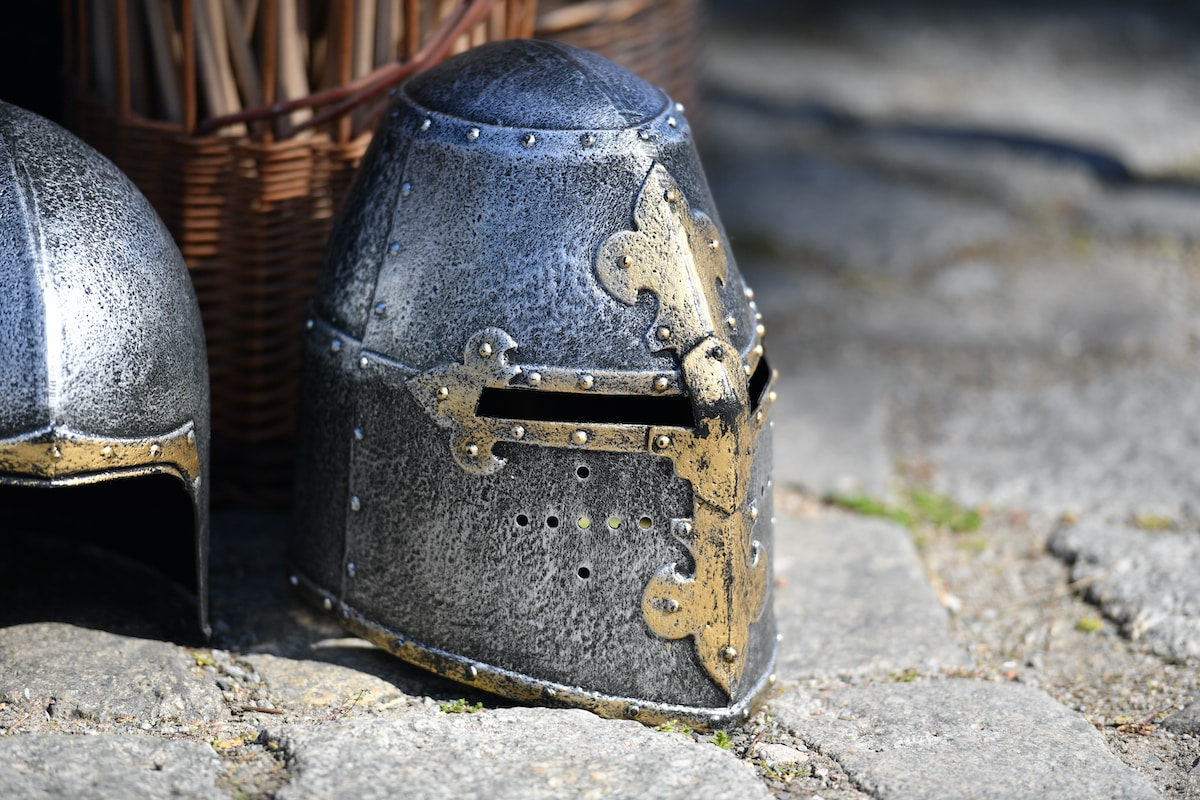 Helmets
Helmets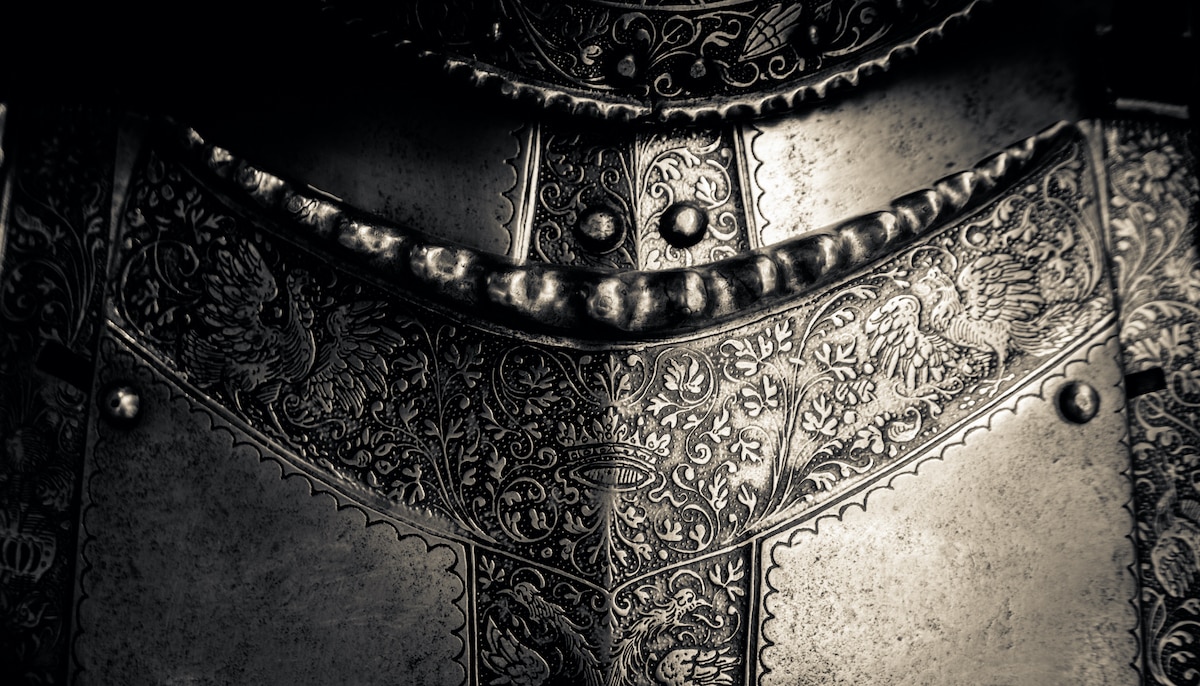 Torso Armor
Torso Armor Bracers and Arm Protection
Bracers and Arm Protection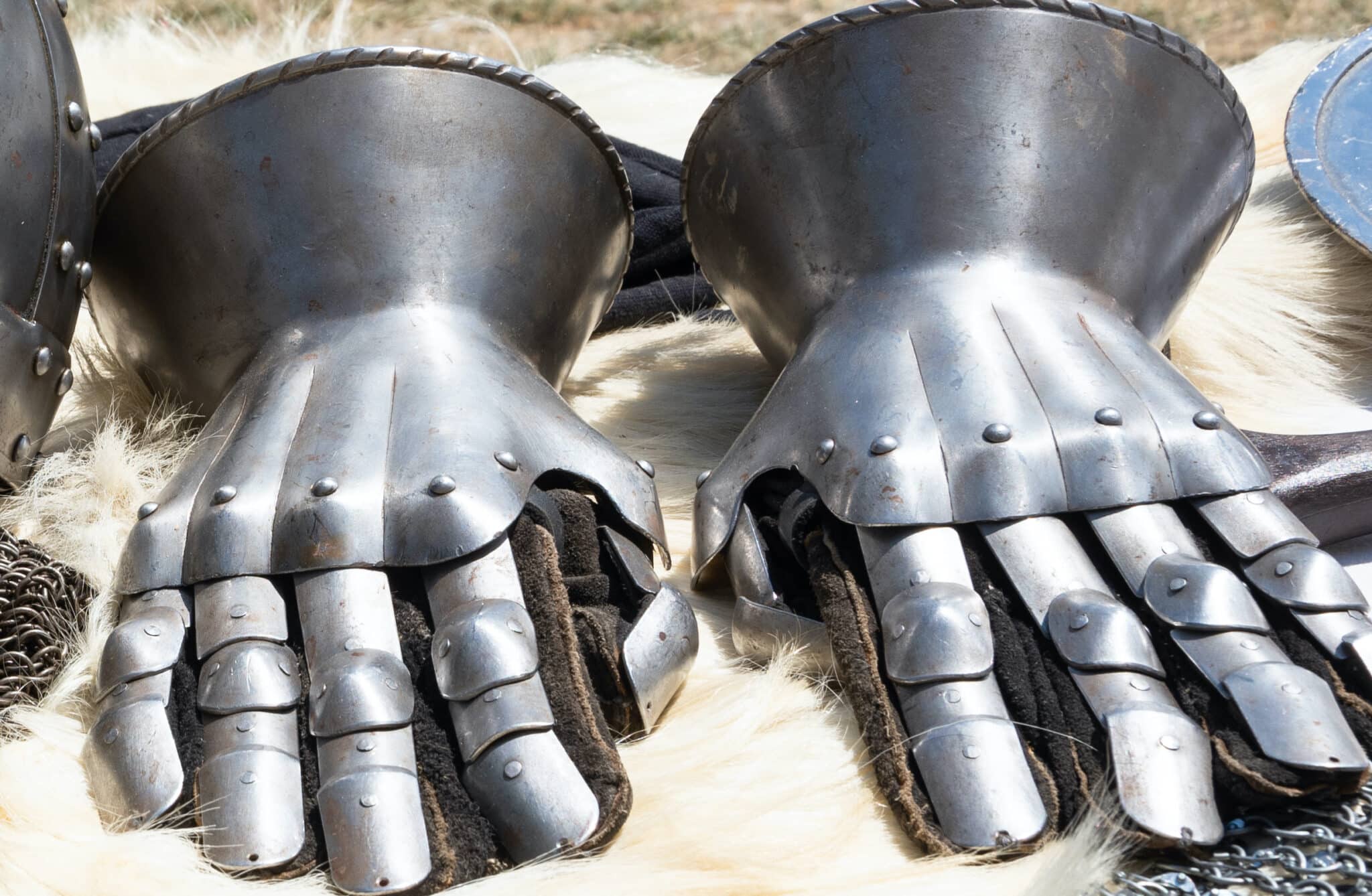 Gauntlets
Gauntlets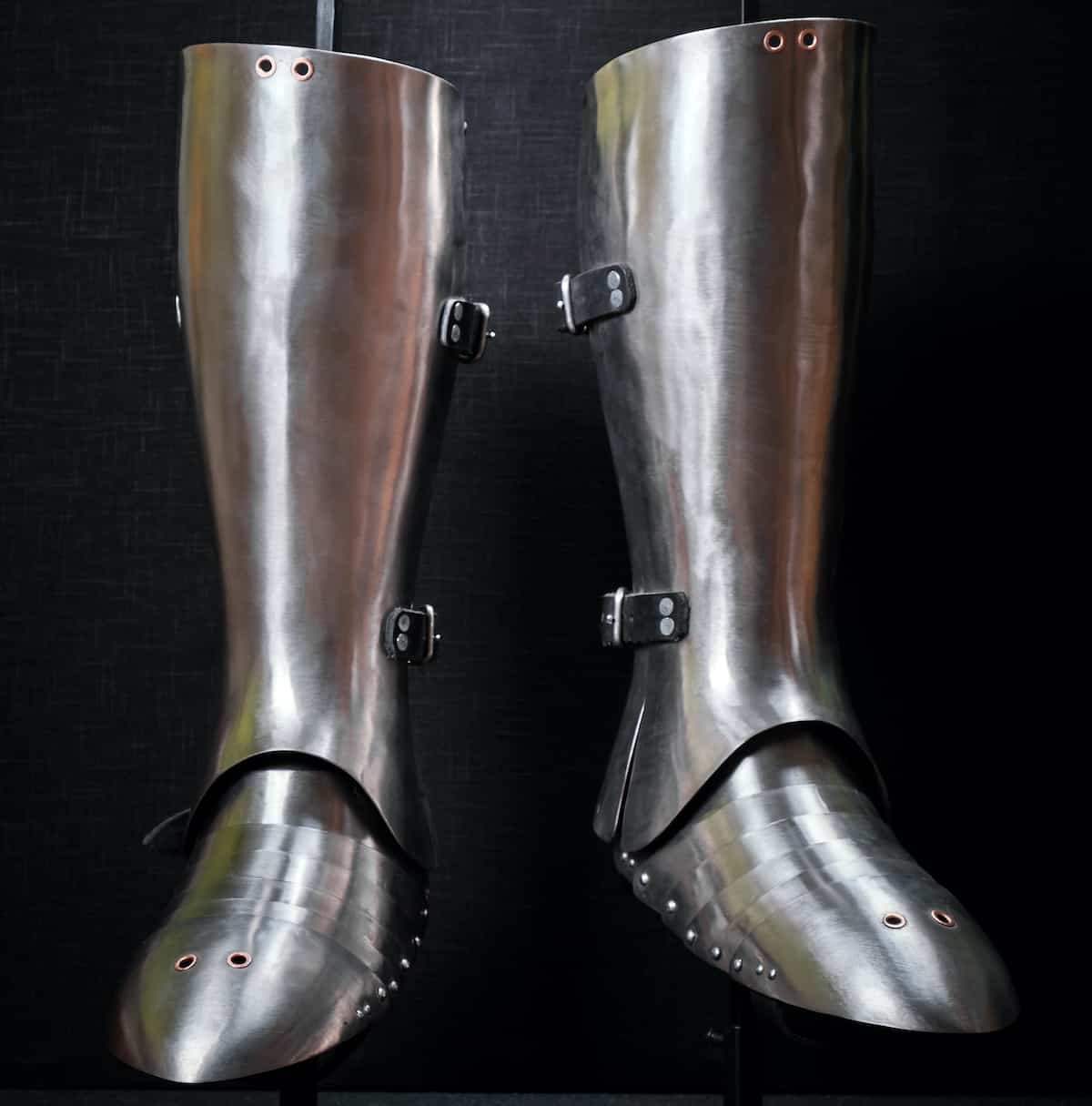 Leg Armor
Leg Armor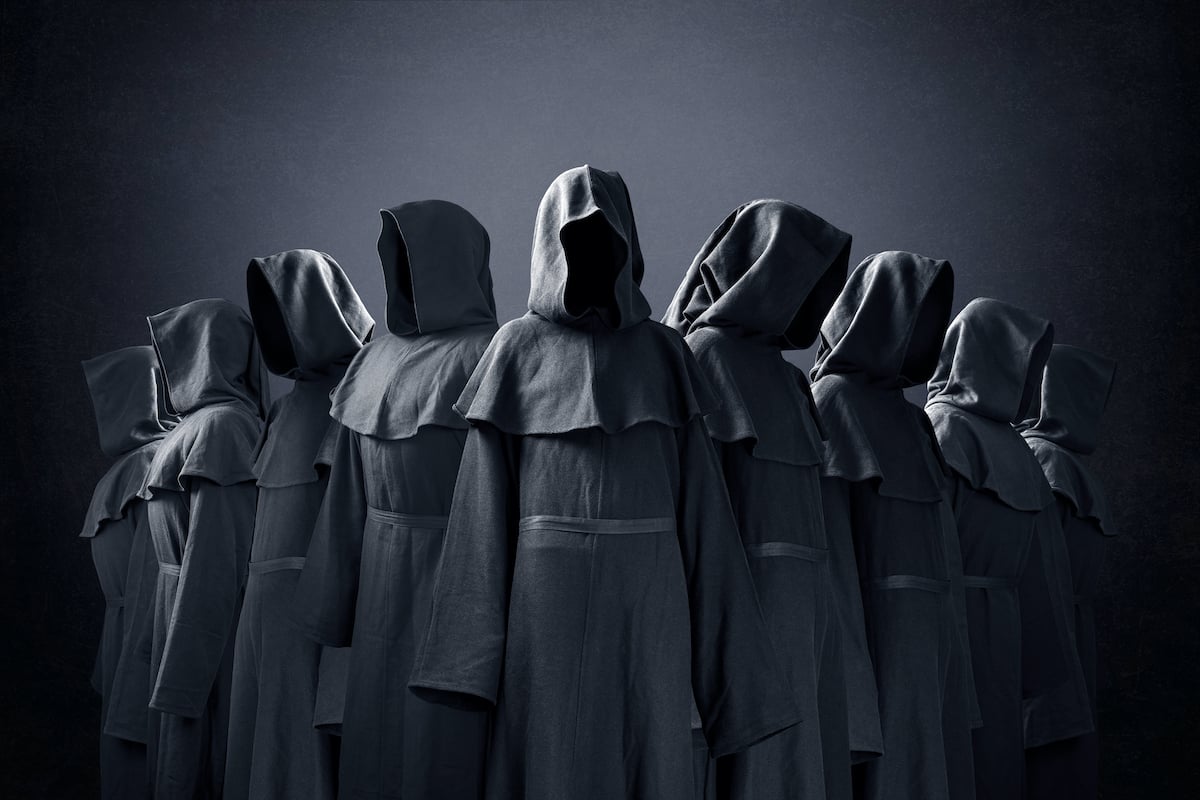 Cloaks
Cloaks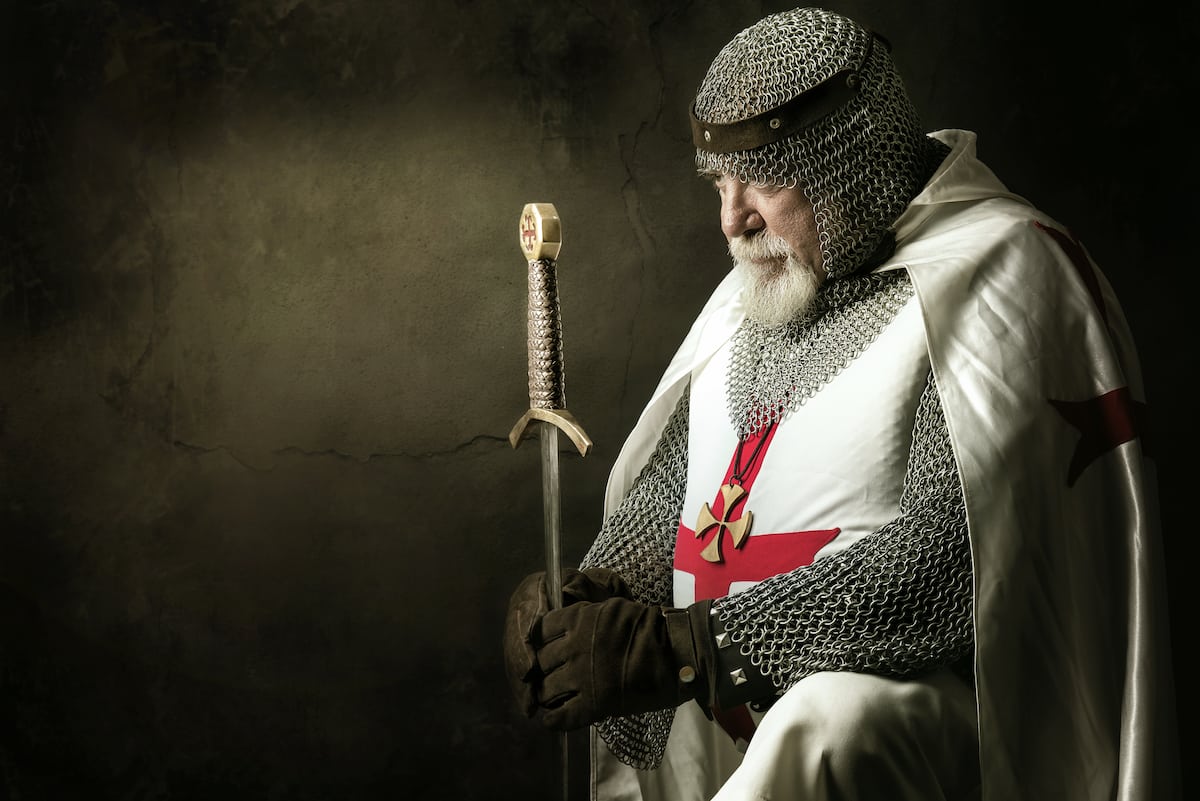 Tabards
Tabards Shirts
Shirts Tunics
Tunics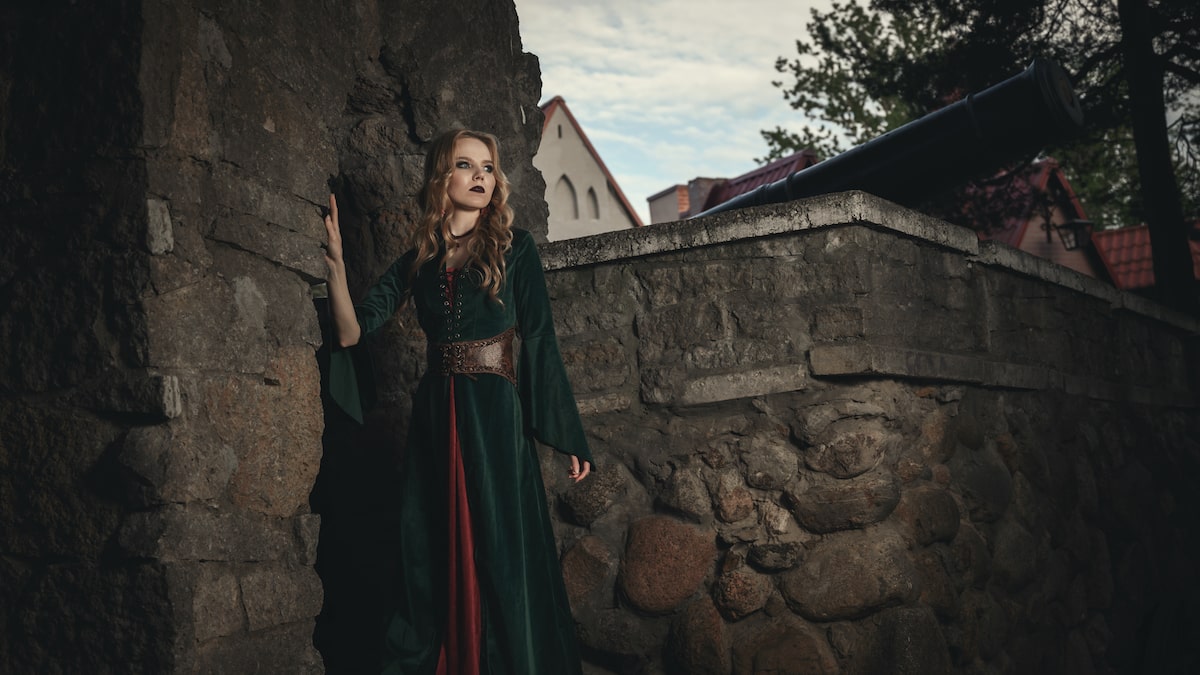 Dresses
Dresses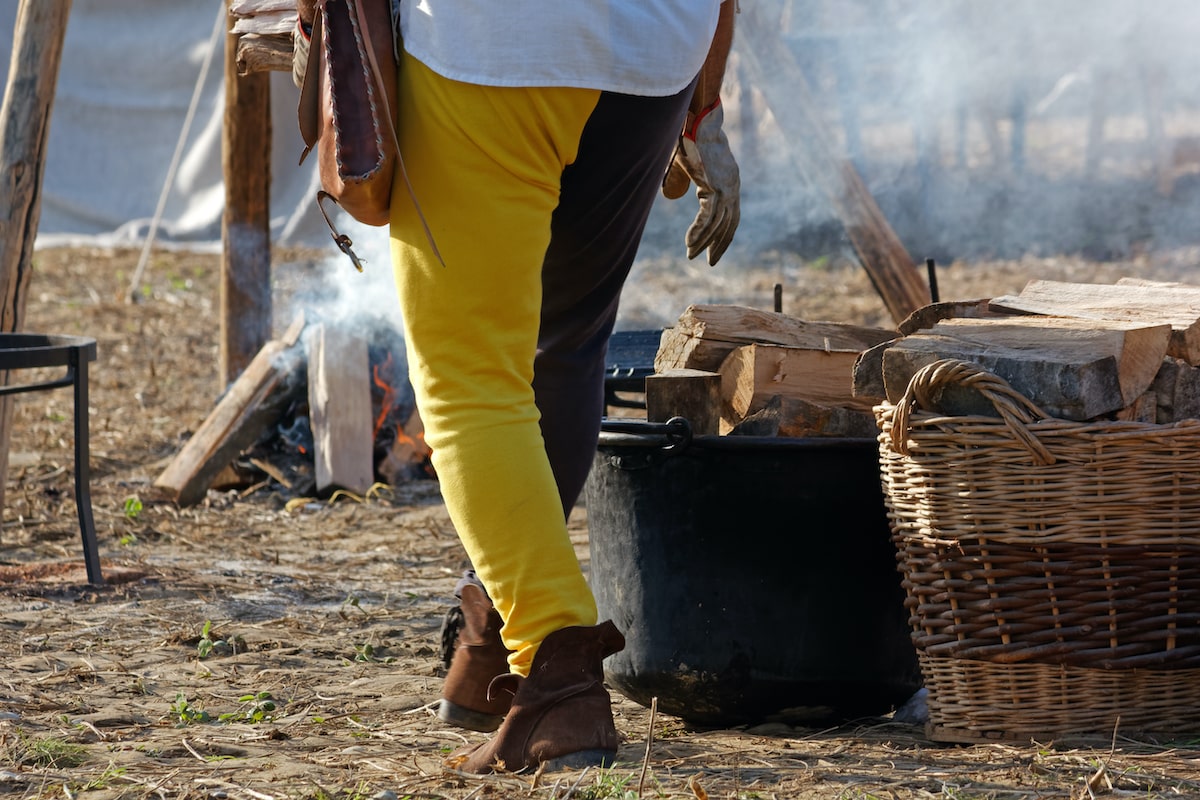 Pants
Pants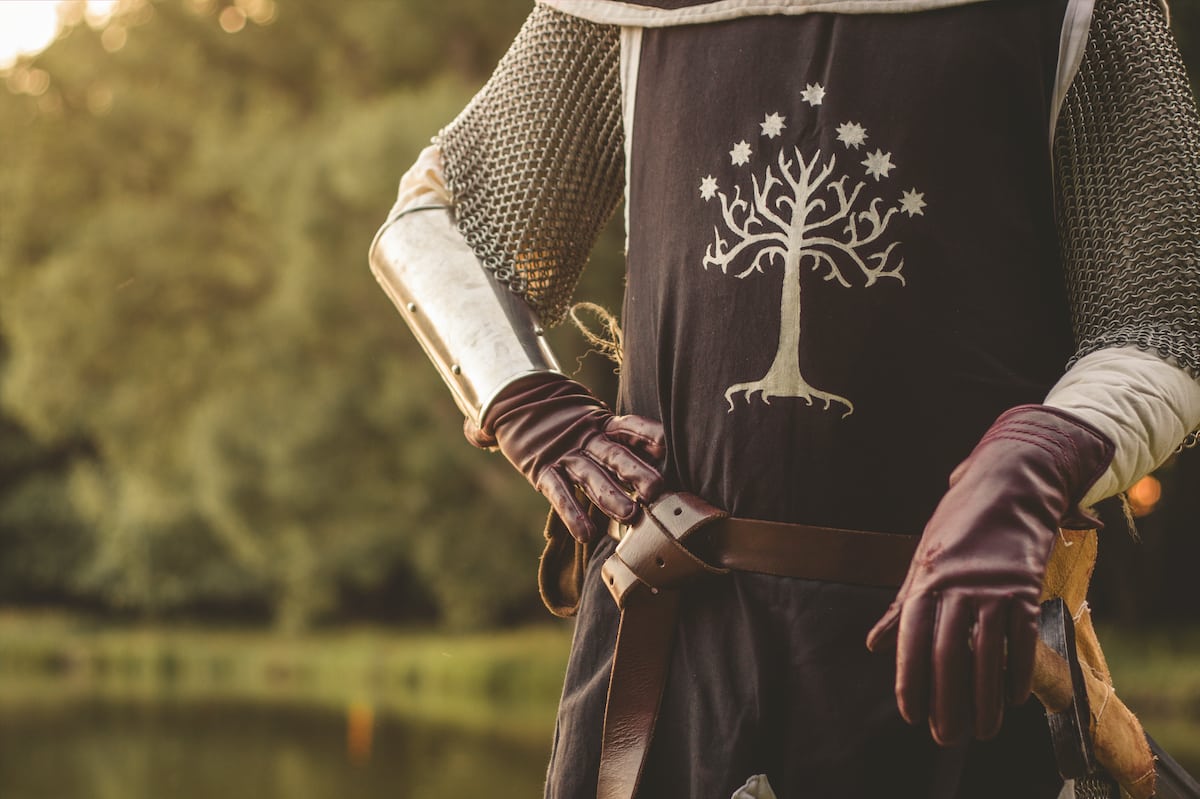 Gloves
Gloves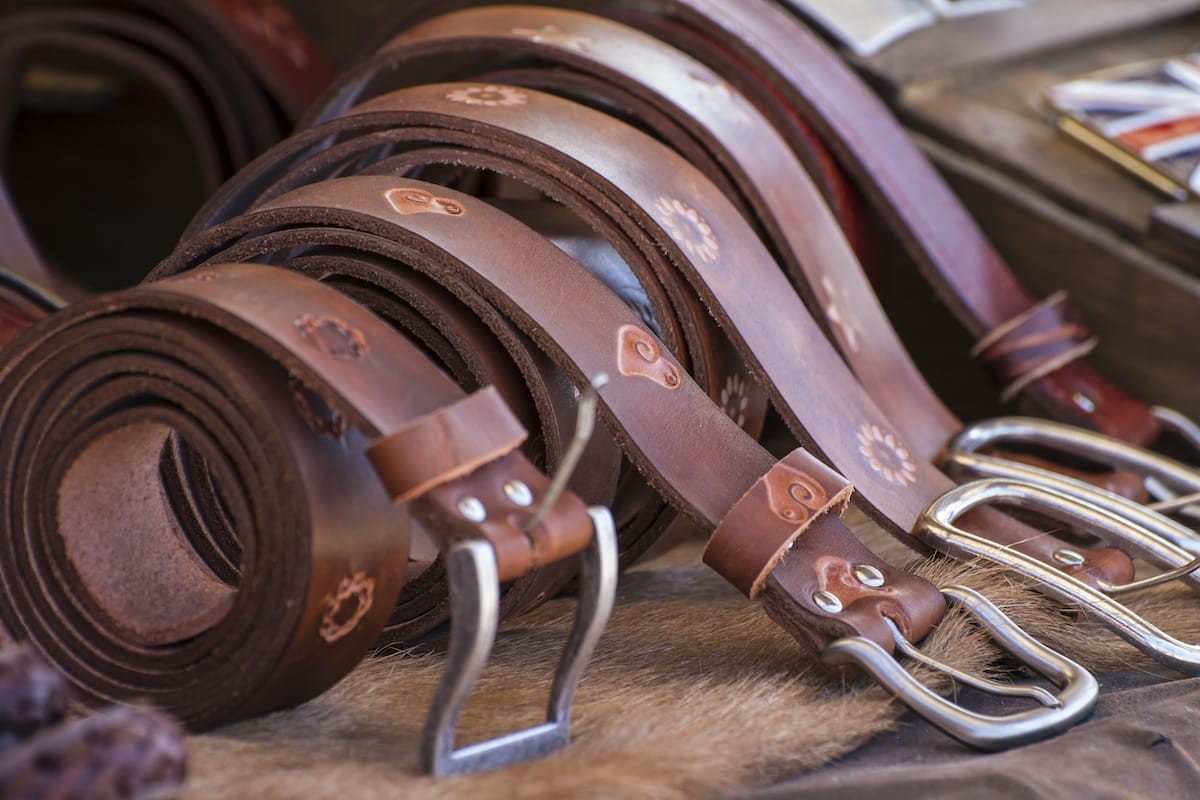 Belts
Belts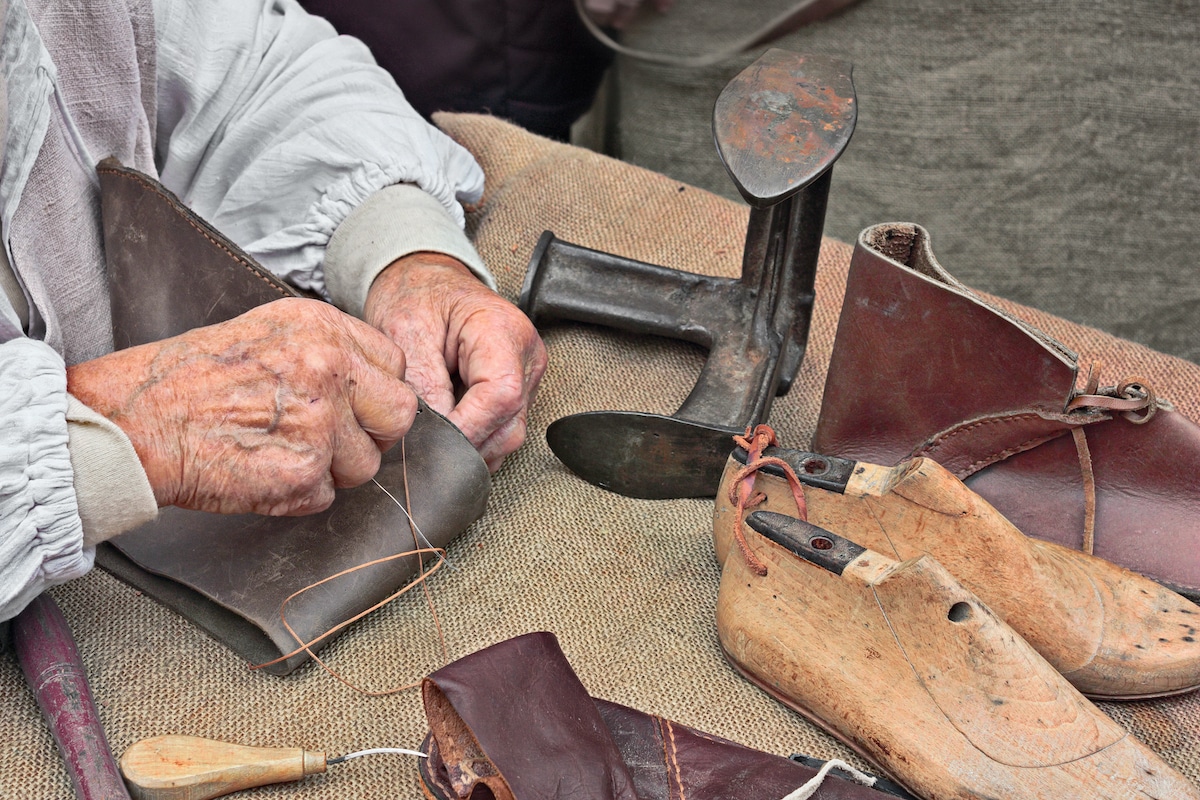 Shoes
Shoes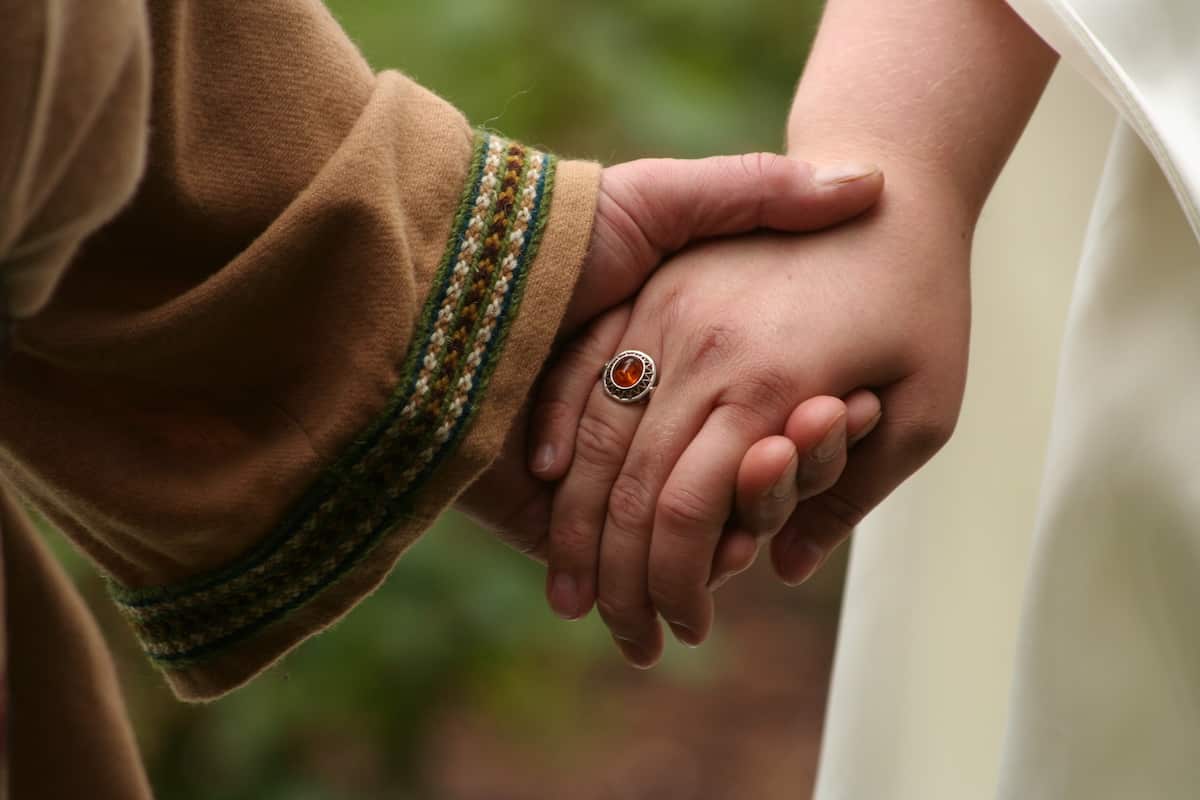 Rings
Rings Necklaces & Pendants
Necklaces & Pendants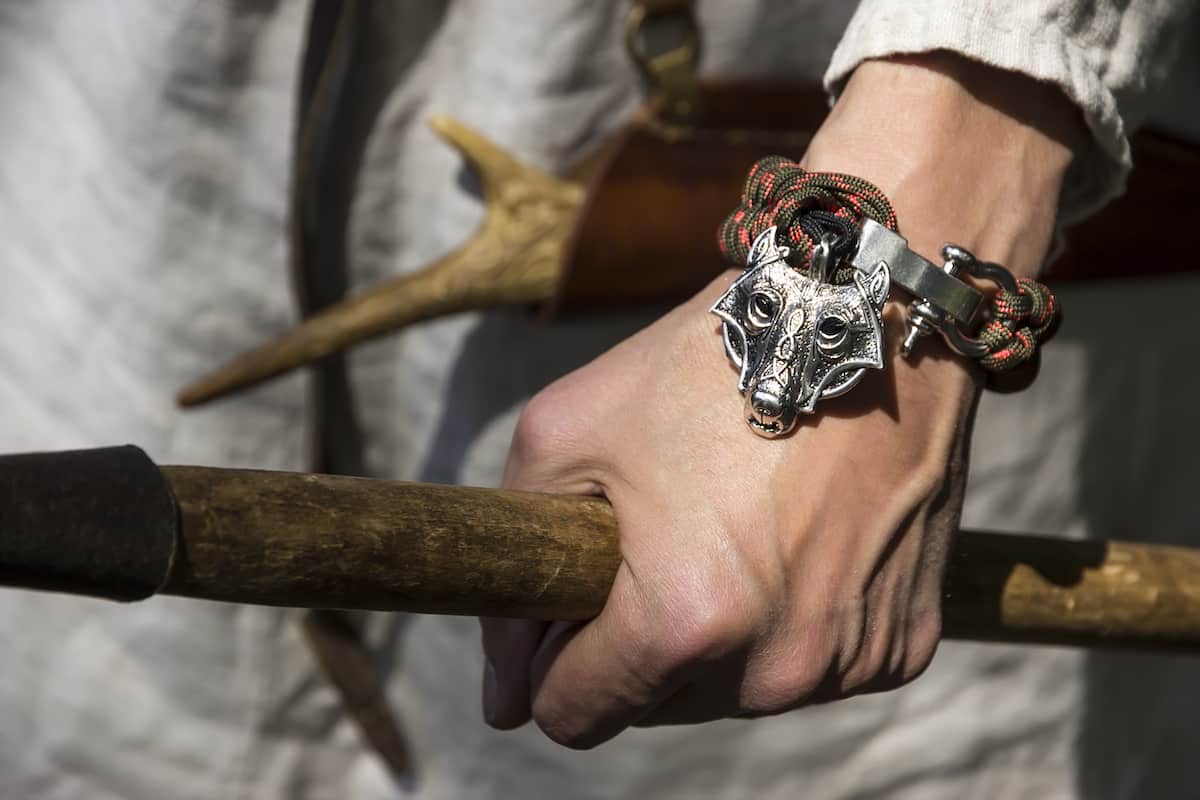 Bracelets
Bracelets